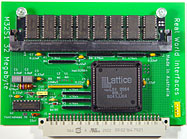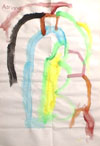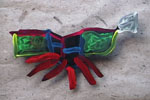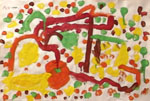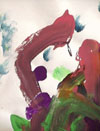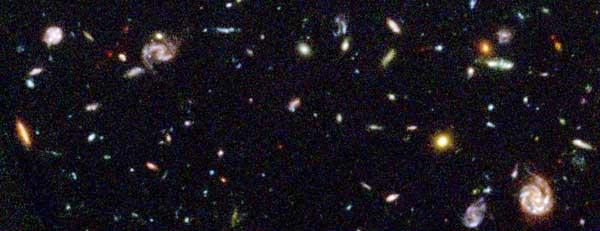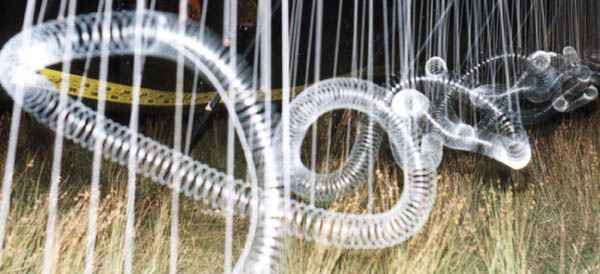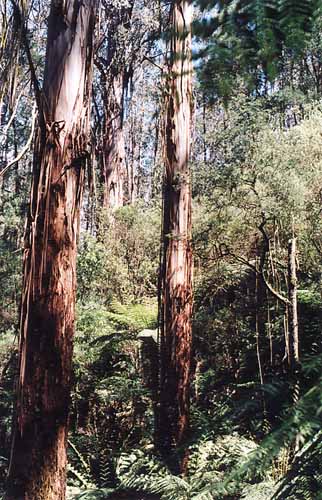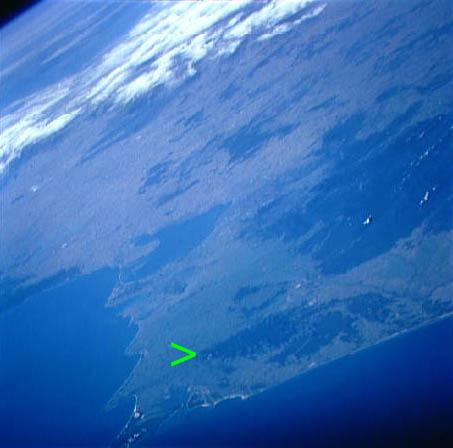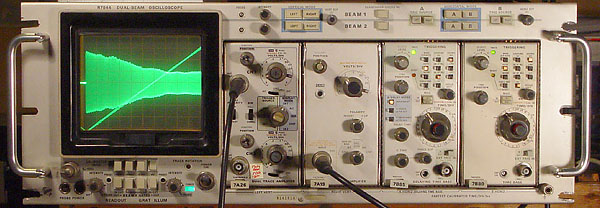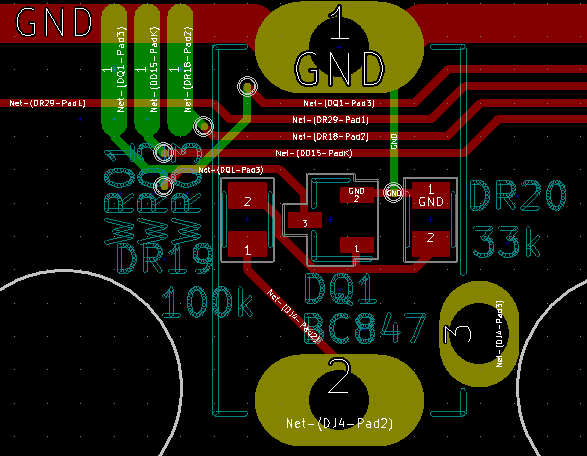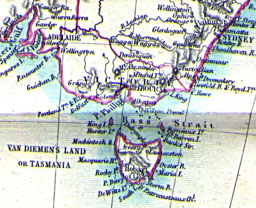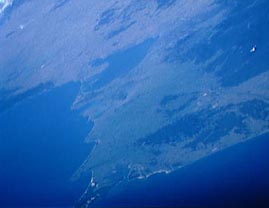
- Robin Whittle
| Most people, without substantial (0.125 milligram 5000IU/day for 70kg bodyweight) vitamin D3 supplementation, have far too little circulating 25-hydroxyvitamin D (as measured in "vitamin D" blood tests) for their immune systems to work properly. Many doctors think that 20 ng/ml (50 nmol/L in UK, Australia etc.) or perhaps 30 ng/mL (75 nmol/L) is sufficient for general health - but these levels are based on the needs of the kidney for regulating calcium/bone metabolism, not on the needs of the immune system. The immune system needs at least 50 ng/ml (125 nmol/L) to function properly. For the most pertinent research on vitamin D and the immune system, please see: This begins with recommendations from New Jersey based Professor of Medicine, Sunil Wimalawansa on how much vitamin D3 to supplement, on average, per day, to attain this without the need for blood tests or medical monitoring. His recommendations are as ratios of body weight, with higher ratios for those suffering from obesity. For 70 kg (154 lb) adults, 0.125 mg (5000 IU) a day is a good amount. Governments and many doctors only recommend 0.015 to 0.02 mg (600 to 800 IU) a day. Five thousand international units sounds like a lot, especially in countries like Australia where the largest capacity vitamin D3 capsule the government allows to be sold in retail shops is 1000 IU. 5000 IU is 1/8000th of a gram. Once a day, on average, this is a gram every 22 years. Pharma-grade vitamin D3 costs about USD$2.50 a gram ex-factory. A credit card weighs 5 grams. See also my Substack: The easy way to remember how to find these sites is to follow the links from https://5nn.info - 5 Neglected Nutrients. Here is my vitamin D flyer - A4 Vitamin-D-flyer-2024-10-10.pdf or two A5s on an A4: Vitamin-D-flyer-2024-10-10--2-to-a-page.pdf. 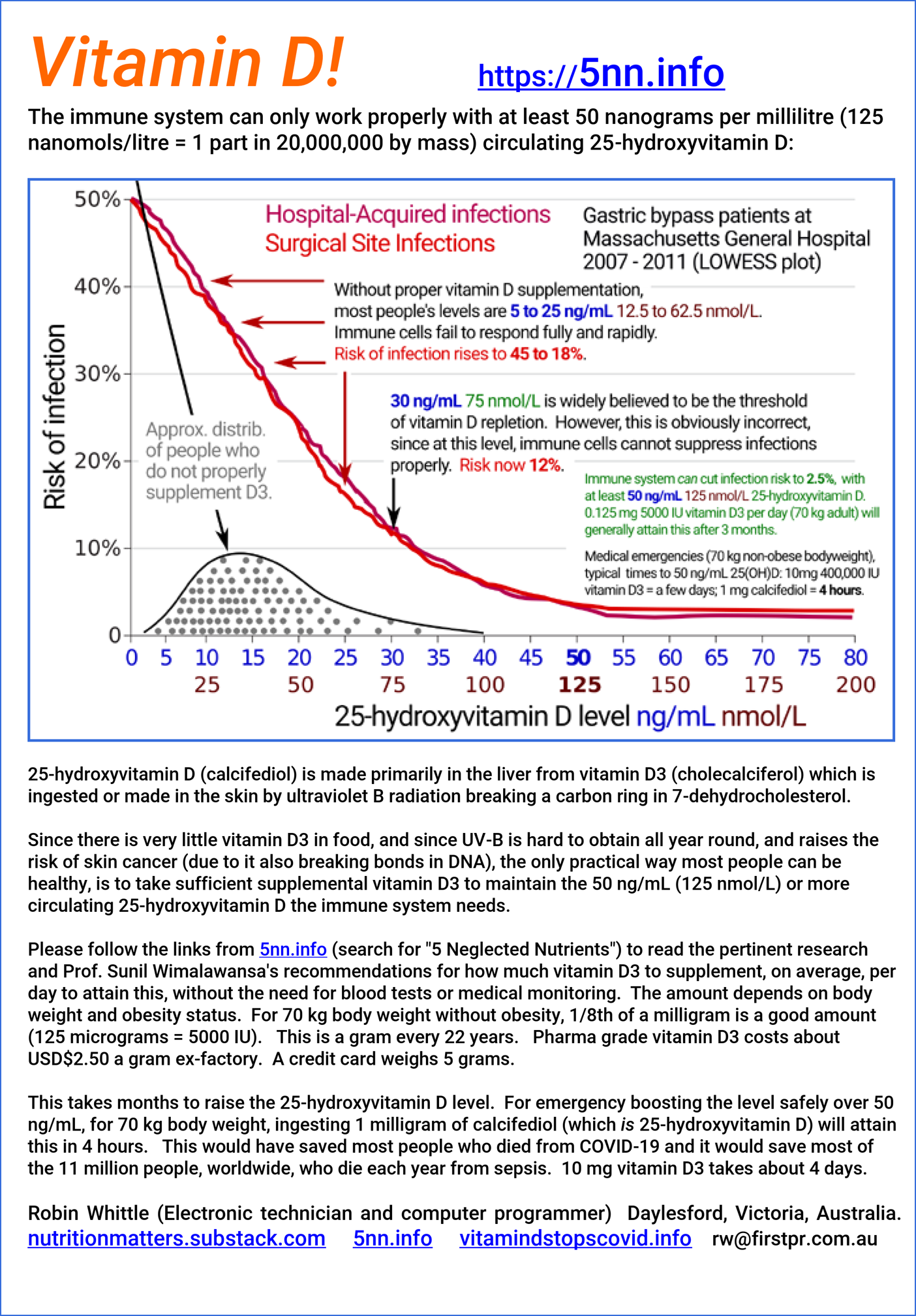 |
Research projects
http://astroneu.com The Astrophysics of the Non-Exploding Universe, including attempts to explain the heating of the solar corona. http://aminotheory.com Health and nutrition. Restless Limbs Sensorimotor Disorder (RLSD) - the name I think should be adopted in place of Restless Legs Syndrome and Periodic Limb Movement Syndrome. This includes my observations, etiological theories and non-drug methods of avoiding or reducing these problems.
Also, links to research which show that coffee - decaf and non-decaf, instant, filter and espresso - contains significant quantities of opioid receptor antagonists. If so, it would not be surprising if drinking coffee makes people miserable, even more than due to the caffeine it contains. Nor would it be surprising if coffee of any kind worsened pain-perception disorders such as fibromyalgia. We found that even 3 decaf coffees a week caused bad RLSD symptoms.http://realfield.com/anm/
Researching the history of the measurement of low-level audio noise in a manner which reflects human perception. This is particularly important for microphone self-noise. Most microphones today have their self-noise specified in dBA, which does not accurately reflect human perception. This page concerns CCIR 468 and related Quasi-Peak standards which do a much better job.
Devil Fish modifications for the TB-303
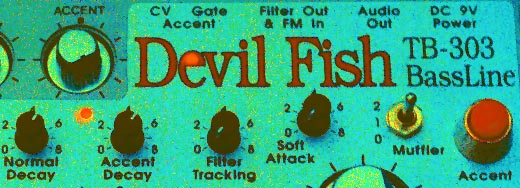
Information, prices, pictures and sound samples for the Real World Interfaces Devil Fish mods are at rwi/dfish/. Details of the TR-606, TR-808 and TR-909 modifications are at: rwi/tr-606/, rwi/tr-808/ and rwi/tr-909/ Also a page with information on modifications to Casio musical instruments from the early 1980s.
32 Megabyte memory boards for Akai samplers
Details of these cost-effective boards are at rwi/smem/.
Tina and
Sandra's books - "13 Ways: Illustrated Stories", "The Infinite Loop"
and "Stranger Places"

In 2016, Sandra and Tina published a novella of spaceships, time warps and free pie: The Infinite Loop. In 2017, their novel Stranger Places is the second in the Pie Town series.
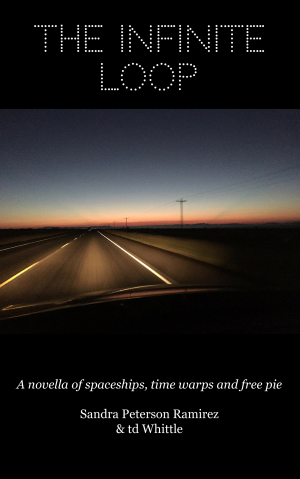

These are available in Kindle
and paperback editions:
http://www.amazon.com/dp/0989559327
http://www.amazon.com/dp/0989559335
Some of the 13 Ways stories appear at Tina's and Sandra's site http://www.liketellingthetruth.com.
Their publishing project has a website: http://thirteenways.com.au and a Facebook outpost https://www.facebook.com/thirteenwayspress .
Contemplative ambient music - Astral Truth Window

We finally released some pieces from 1979 and 1996, together with a new track made in September 2018. Tina and I will be making more contemplative ambient music together:
https://www.youtube.com/channel/UCOZ0AfEcx93zLrJeEjsGw8w Some minimal videos.
https://astraltruthwindow.bandcamp.com/releases
Photos of Daylesford and places
nearby
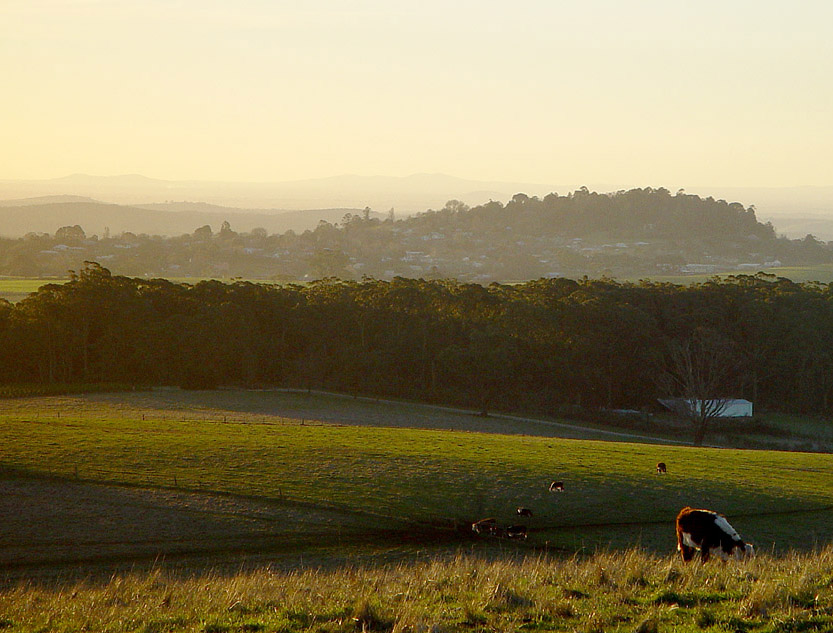
Gallery of Children's Art
The gallery/ contains images of paintings and drawings by Adriana Hardy - who drew the portrait of me which near the bottom of this page. I often really enjoy children's art and Adriana's bold, colourful, largely abstract designs make a big impression on me. These images range from mid 1997, when she was four and a half, to April 2002, when she was nearly nine. Click on any of these images to see many more:
Sculpture by Inge King
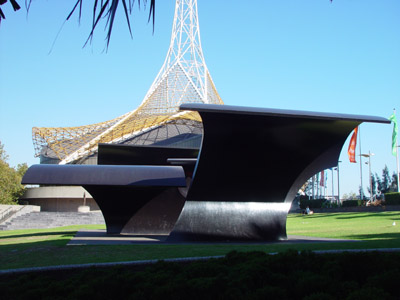
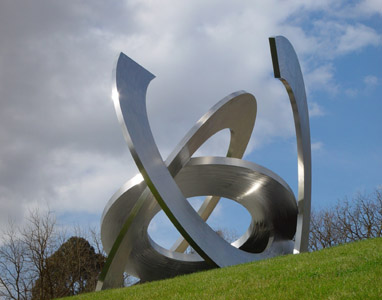
Astrophysics
This is a 0.0001 radian (0.0057 degree) high section of the Hubble Deep Field images of a section of the Universe, in the northern skies, where it is possible to see a long way without many stars from our galaxy obscuring the view. The angle subtended by a human hair held at arm's length is about the angle in the vertical direction of this image. The barred spiral galaxy to the top middle left is probably like our own - about 100,000 light years in diameter. Since it subtends an angle of about 1/50,000 radians, it is reasonable to estimate that the galaxy is around 5 billion light years away. Read more at http://astroneu.com about this and other images, and about the cosmological redshift, which is the main reason for believing in the Big Bang and the expansion of the Universe. Unfortunately, many astronomers regard this as a fact, but it is just a theory. If it could be shown that light, whilst traveling through the intergalactic medium (very low density hydrogen and helium atoms, a few electrons and ions etc.) for a year loses one part in 14 billion of its energy, then this would explain the cosmological redshift. In that case there would be no reason to believe the Universe is expanding, or that it "began" with a "Big Bang". Meanwhile, the heating and acceleration of the solar corona and solar wind remain unexplained by conventional theories . . .
Sliiiiiiiiiiiinky - the world's longest Slinky
The average Slinky is fine for walking down steps, but I want to send waves! I have finally solved the limitations of short Slinkies, and many of the problems of gravity, to make my 21.4 metre (71 feet) Sliiiiiiiiiiiiiiiiiiiiiiinky. Click on the photo to enter the slinky/ directory for more photos, wild piezo-pickup audio MP3s and some videos too . . .
Binaural Recording
Eclectic Sensibilities
The eclectic/ directory contains my Yum-Yum Gourmet Breakfast Toast recipe and Nature-2.0.doc a rare communication from God and Mother Nature discussing the bugs in Nature 1.0 and giving a glimpse of features in the new version 2.0.
Csound and Digital Signal Processing
The csound/ directory contains introductory material and links regarding the Csound music synthesis language, and some of my work on this program. See the dsp/pink-noise/ directory for a roundup on DSP generation of pink noise. I have a treatise on the Carta optimisation of the Park Miller "minimal standard" pseudo-random number generator, with C, C++ and dsPIC assembly language source code: dsp/rand31/ .
Stick-insect photos!
I was honoured to receive a visit from that most dignified of insects, a striding, clambering stick-insect. I took a few Polaroid photos, scanned them, but them on the Web and emailed friends about it within an hour or so. See the photos of my distinguished, seven inch long visitor in the stick-insect/ directory!
Green Ant Productions - full moon trance techno dance parties
-
The green-ant/
directory contains
a link to the Green Ant web site and photos of a 13 March 1998 dance
party at Nyora, including photos of some extraordinary fluorescent
sculptures - and some fluorescent people too.
My Show-and-Tell department!
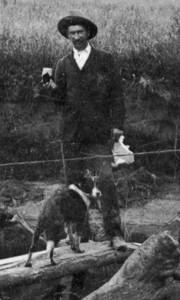

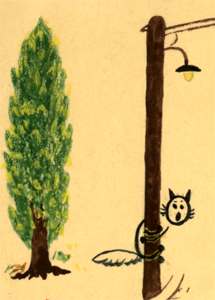




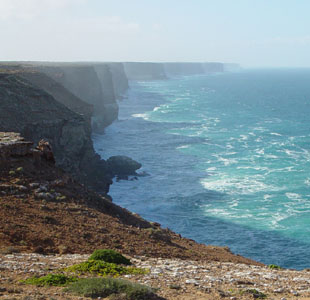
Old photos and postcards, a colour photo from 1913. A hand-drawn poster from the 1950s-60s. 1938 handwriting. Corsetry adverts. German Valentines Day postcards posted in Pennsylvania ca. 1911. Photographs of mountain ash and rain forest at the Little Franklin River, South Gippsland. Two detailed photographs of the Sun Beachgirl Quest in the late 1940s or early 1950s. A rag doll angel and one from Waverley Cemetery, Bronte, Sydney. Green ants, mangroves, trees, rattan and little sand balls on the beach near Cape Tribulation in Far Northern Queensland. Click on a photo or peruse the show-and-tell/ directory. Also, a report on how government surveillance and compulsory RFID tagging of citizens is keeping us safe from the threat which lurks within. Another page shows an intriguing cutter for plastic tube beads, as used for handicrafts in the 1960s.
There is an expansive page with big images of the Nullarbor Plain and Bunda Cliffs:
Strzeleckis
Forest - sold
as
"plantations" to US logging company
Fukushima nuclear reactor crisis
Telecommunications
-
The telco/
directory contains
information on my technical writing for Paul Budde Communications,
articles for the now-defunct Australian Communications
Magazine, on my consulting services and on other telecommunications
resources, including the Link mailing list, which is a vibrant
Australian discussion forum regarding Internet issues, privacy,
censorship and information management issues.
Various technical things . . .
- Utilisation of IPv4 address space If we are about to run out of IPv4 address space, why are there only about 107 million computers on the Internet which return pings? There are over two billion IP addresses, so this is a low rate of "host density". The ip/ section has some analysis of current use of the IPv4 address space, with what may be unique information on the distribution of host densities among various prefixes.
- Ivip (Internet Vastly Improved Plumbing) A proposal to allow the Internet's routing and addressing system to provide multihoming, portability and traffic engineering for vastly more users, each with their own IP addresses and subnets, than is possible within the limitations of the BGP routing system. ip/ivip/ .
- Web email software web-mail/ A survey of software for email via the Web. Also how I installed (on CentOS 5.1) the mail programs Postfix, Courier IMAP, Courier Maildrop (mail filtering). How I integrated Spamassassin and Anomy Sanitizer to filter spam, viruses and other malware, as part of my Courier Maildrop server-based email filtering system. Also some notes on setting up Mozilla Thunderbird not to send HTML messages, to send plain text messages with "format=flowed" disabled, and to display messages tagged for deletion without strikethrough (crossing out of the text).
- Computer Systems Administration sys-admin/
- Archiving Yahoo Groups - grabbing the messages, attachments, files and photos from a Yahoo Group. I did this for two such groups in September 2013 before my account was converted to Neo, which made such operations impossible.
- Problems with HTML email - and why I think email clients should default to plain text, fixed width fonts and sensible WYSIWYG on-screen text wrapping.
- Silent Hard Drive - how to make an aluminium case to keep hard drives really cool and quiet. Also some notes on CPU and power supply fans and on the beautiful Panasonic Sirocco centrifugal blowers.
- TIFF to PDF conversion - creating single or multi-page PDF files from one or more TIFF files.
- Making an Audio Patch Bay from a solderless breadboard.
- Little Blimps blimp/ Why flap, zoom or whoosh when you could be floating, and pedaling, or maybe being propelled by solar power. Flight can be like snorkeling and SCUBA diving! Above the treetops, at leisure - provided the wind is slight. This page links to sites and a mailing list for single person or at least very small blimps, including one magnificent pedal-powered craft White Dwarf.Also some links regarding cluster ballooning - tie a bunch of large helium balloons to you and . . . . . . .
- Highlights of the Link Discussion List link/ Link is a lively Australian discussion list for IT, censorship, privacy etc. This page contains, or links to, highlights of this list, starting with discussions on ASCII art, problems and benefits of open-source software, and problems in educational arrangements and paper qualifications in technical fields such as electronics and computer systems administration.
- Book design with Open Office book-design/ The openoffice.org suite of software is an open-source "equivalent" to Microsoft Office. But Open Office goes far beyond Microsoft Word's capabilities for creating complex documents with character styles, multiple indexes and bibliographies etc. Here I explore using OpenOffice Writer, together with the open-source Ghostscript equivalent to Adobe's Acrobat Distiller - to do the complete book writing, layout and .PDF file production process on freely available open-source software. If this works well, then it is a vastly more elegant approach than the various messy arrangements more commonly used in the publishing industry, such as writing in Word, then transferring the manuscript into Quark Xpress for greater typographic and layout control, and then doing manual indexing and other horrors. OpenOffice Writer's style system is vastly more powerful and has greater scope than MS Word's. No-one makes money from this, so there is no advertising - but users and people who write about software for magazines will be shouting from the rooftops as they figure out the power, rigour and (from what I have heard) the robustness of this free software.
- The Joy of Test Equipment tequip/ We have some exotic electronic test equipment, including some Tektronix oscilloscopes, a LeCroy digital oscilloscope from 1992 and an all-valve Hewlett-Packard frequency counter which was designed in 1953 and made around 1964. Below is our R7844 dual beam, modular, rack-mount, ~400MHz oscilloscope with two vertical plugins and two timebases. This can function as two independent oscilloscopes which share a single screen.
- Making Printed Circuit Boards at home pcb-diy/ Making printed circuits at home, with minimal equipment and fuss.
- Special techniques for Kicad - a powerful open-source schematic and PCB design program kicad/.
- Towards an Initial Understanding of Linear Programming linear-programming/ Linear programming is a mathematical optimisation technique with many important applications. This page links to some explanations of Linear Programming, the simplex algorithm and the dual simplex algorithm which are suitable for people who, like me, lack training in the relevant branches of mathematics.
Music Marketing in the Age of Electronic Delivery
The musicmar/ directory contains material relating to music marketing with discovery, and ultimately delivery, taking place via the Internet. This includes direct artist to listener relationships which are not burdened by the risks, costs and restrictions such as geographic proximity and stylistic compatibility with advertising.
Audio Compression
The audiocomp/ directory contains material on both lossy and lossless audio compression algorithms. There are tests on the fidelity of MPEG Audio Layer 3, AAC and Yamaha's Twin VQ audio compression schemes. The lossless page is the most extensive test of lossless audio compression programs.
Consumer Advocacy
-
The website I started in 1995 http://www.ozemail.com.au/~firstpr/
no longer exists. I moved some of the material when I established
this one in 1997. The issues/
directory is the home for material from the late 1990s.
This concerns consumer advocacy in
telecommunications and privacy. In late 1999 I decided to
stop
working on consumer advocacy. Although I and others worked
damn
hard and in many ways effectively, the major battles I worked on since
1992 have turned out pretty much worst-case: telemarketing, Calling
Number Display, Internet censorship (actually, it was threatened
several times, most recently by the Labor Party) and cryptography
policy.
I
now concentrate on fields where I am confident I am making a positive
human impact.
The issues/ directory contains three major sets of material. Firstly the battle over telemarketing regulation. Progress came later to telemarketing, with the establishment of https://www.DoNotCall.gov.au in 2006. Although we still have to opt out of telemarketing, and there are no limits on charity or political telemarketing (likewise not all businesses can opt out) at least there is a system. It was based on the US system of the same name. The US system has a public list of numbers which must not be called by telemarketers, which is a serious security risk for many people. The Australian scheme greatly improves on this by maintaining the do not call list secretly, and requiring telemarketers to pass their lists to the ACMA-approved company which runs the system, so the lists can be returned with a flag for numbers which should not be called. This list-washing approach to telemarketing control has fewer security and privacy problems than the US approach.
Secondly, my submission to the Senate Select Committee on Information Technology concerning problems in the regulation of a number of fields, including: Calling Number Display, outbound telemarketing, Customer Activated Malicious Call Trace, Internet censorship, SPAM email, privacy in the mass media and in Internet communications and the need for federal privacy legislation to cover the activities of companies.
Thirdly, my
submission to
the same committee on the government's Internet censorship bill, which
was passed in the Senate on 25 May 1999. This deeply cynical
piece of legislation cannot last. (Ahem - in late 2006 it is
still in place.) It is a scandal it was ever proposed, let
alone
passed. See https://www.efa.org.au/category/censorship/mandatory-isp-filtering/
for information on the Labor Party's now abandoned Internet Censorship
bill.
Human Curiosity - archiving queries to search engines
-
In the curiosity/
directory is
the beginnings of my project to research and archive human curiosity by
collecting the search terms submitted to search engines - in this case
MetaCrawler/MetaSpy.
In praise of the Logitech Marble + optical trackball (Mice should be banned!)
I'm serious. Mice are a global RSI catastrophe. See the ergonomics/ section for the solution. This section also describes my experience with the Microsoft "Natural Keyboard" and why I decided to stop using it.
Archiving defunct sites
Where am I?
Click on the map below to see maps of Australia and of the Melbourne area. (Tina and I now live in Daylesford.) There are also some photos from space, and links to the Bureau of Meteorology for the latest satellite photos, rainfall charts, synoptic chart and forecasts. This page also contains photos of some extraordinary weather conditions, bushfires and the like - and links to the sites where you can find more about Australian weather and climate. It also includes a description of a wonderful map of Australia from the Australian Geographic Society. There are all sorts of interesting geographical, demographic and meteorological things to be found by clicking on the map below! Also, some links to web sites concerning celebrated Melbourne cartoonist Michael Leunig.
Who is Robin Whittle??
I am a 1955 model, English by birth and Australian by choice and citizenship.
I married Tina (previously Tina Clark from Houston, Texas and New York NY) in 2004. You can read a little about us by clicking on the picture below:

Tina has a blog with her friend Sandra: http://www.liketellingthetruth.com
.
There
is also detailed, but not up-to-date curriculum
vitae of my electronic, software,
consulting, advocacy and writing work.
Contact details and times
Postal and phone contact details available via emailing rw@firstpr.com.auMelbourne (and Victoria, including Daylesford) time
My family's mining optimization consulting business, Whittle Consulting, is http://www.whittleconsulting.com.au .
- North American callers check the timezones here before calling!
- European callers: Australian time is 10 hours before the time in the UK.
- To see the current time in Melbourne, including with daylight saving (summertime): http://www.thetimenow.com/index.pl?loc=11
- A page which shows the current time in Melbourne and a global view with sunlight and darkness with cities shown clearly: http://worldbuddy.com/buddy.cgi/Australia/Melbourne .
- There's a US Navy timezone map here . I have a less blurry version here: TimeZoneMap2003-sharper.gif
- A real-time converter from any timezone to any other http://www.timezoneconverter.com/cgi-bin/tzc.tzc (I found these at the Open Directory Project http://dmoz.org .)
Last update 2021-08-02. This site is an
animated
.gif-, frames-, flash-, shockwave-, Java- and javascript-free
zone! This site does not use cookies, however cookies will be set
by some musical instrument sound sample pages due to the inclusion of
players for You Tube videos and SoundCloud tracks.
These
HTML files were created directly with Netscape
Communicator
4.7x. and since August 2001, open-source
Mozilla and
then KomPozer.
KomPozer rocks! This site runs from a virtual server in Germany,
perhaps located in a data center outside a small town near the Czech
border - see ns1.
© Robin Whittle 1996 to 2021.
